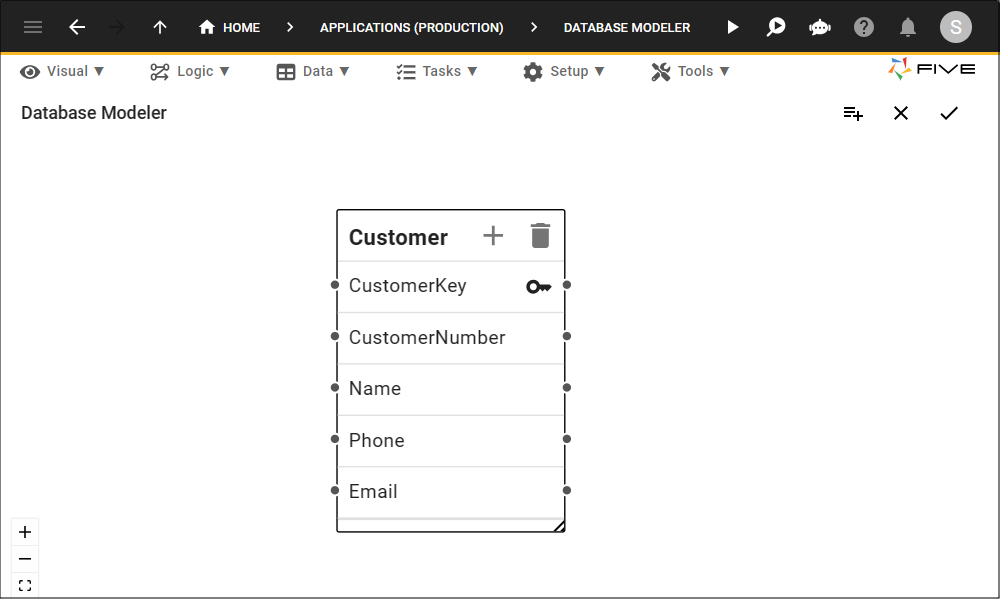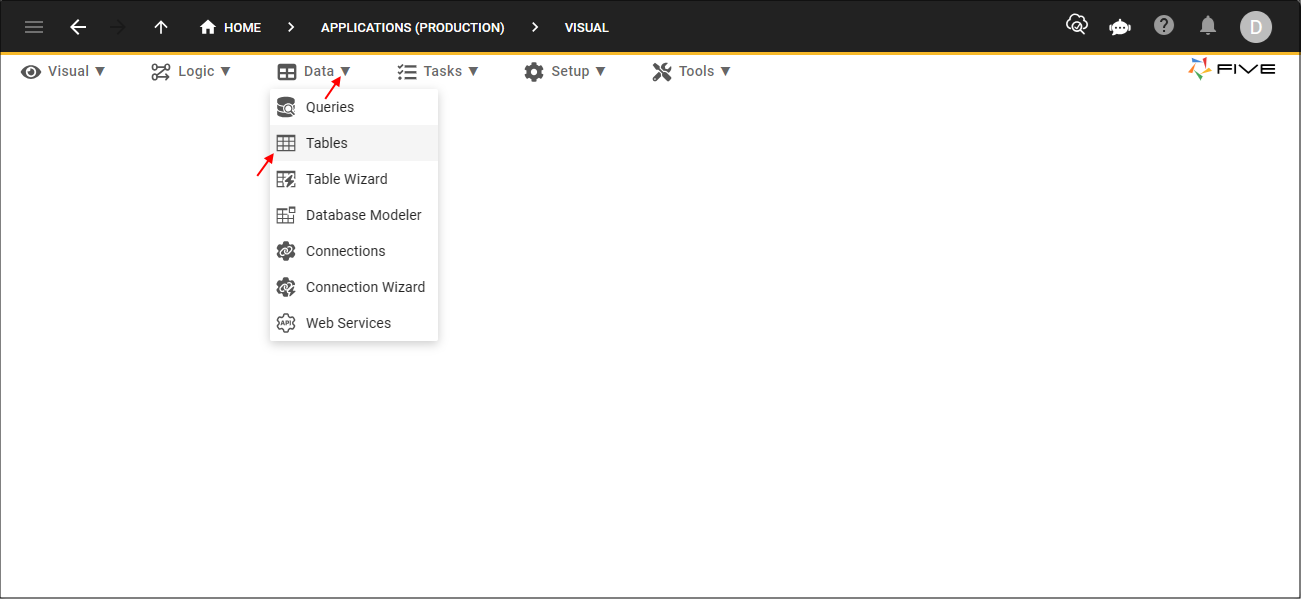Introduction
Last updated 26/10/2023
tip
Five's Table Wizard is a quick way to add your tables into Five.
Five gives you several ways to create your tables. You can use the Table form, Five's Table Wizard, or Five's Database Modeler.
info
Whichever way you add your tables, all table records will be listed in the Tables view.
Tables are a data source that contain your data. In tables, data is logically organized in columns and rows. Each row represents a record that is uniquely identified by a primary key, and each column represents a field in the record.
Columns define the data in a table, and each column holds a single type of data value to further describe the information it contains along with the constraints for the type of data that may be inserted in the column.
Each field in a row is implicitly correlated with each of the other fields in that same row. For example, a table containing customer information data might contain a row for each customer and columns representing customer information such as Customer Number, Name, Phone, Email.

Figure 1 - Example of a Customer table
In Five, you can assign properties to a table, and each field in the table to control the data that is allowed. For example, you can create constraints on a field to disallow null values, or provide a default value, or assign a key constraint on a field that enforces uniqueness or defines a relationship between tables.
Who Can Add, Edit, and Delete Tables?
- When working in the Cloud, only Developer and Control users can add and manage table records.
- When working in Local, the Standalone user can add and manage table records.
How Five Will Use Your Tables
The web-forms connected to your tables, are only capable of instructing the browser on the method of presenting the information. Five handles the transactions needed to store the information in your database. The input values in your application will be accepted by Five and stored in an organized structure in your tables.The fields in your tables can become your form fields on your forms and column headings for your lists. The input values must match the definitions set for the values to be stored in your tables.
Navigate to the Tables View
1. Select Data in the menu.2. Select Tables in the sub-menu.

Figure 2 - Tables menu item
The Table Form
The Table form has five tabs across the top of the form, each of these tabs will navigate you to their respective page to build out your table.| Page | Description |
|---|---|
| General | Select your database and give your table an ID and a name. |
| Events | Attach functions to your table. |
| Fields | Add fields and their definitions. |
| Indices | Add the keys for your table. |
| References | A report of where your table is being referenced. |

Figure 3 - Table form